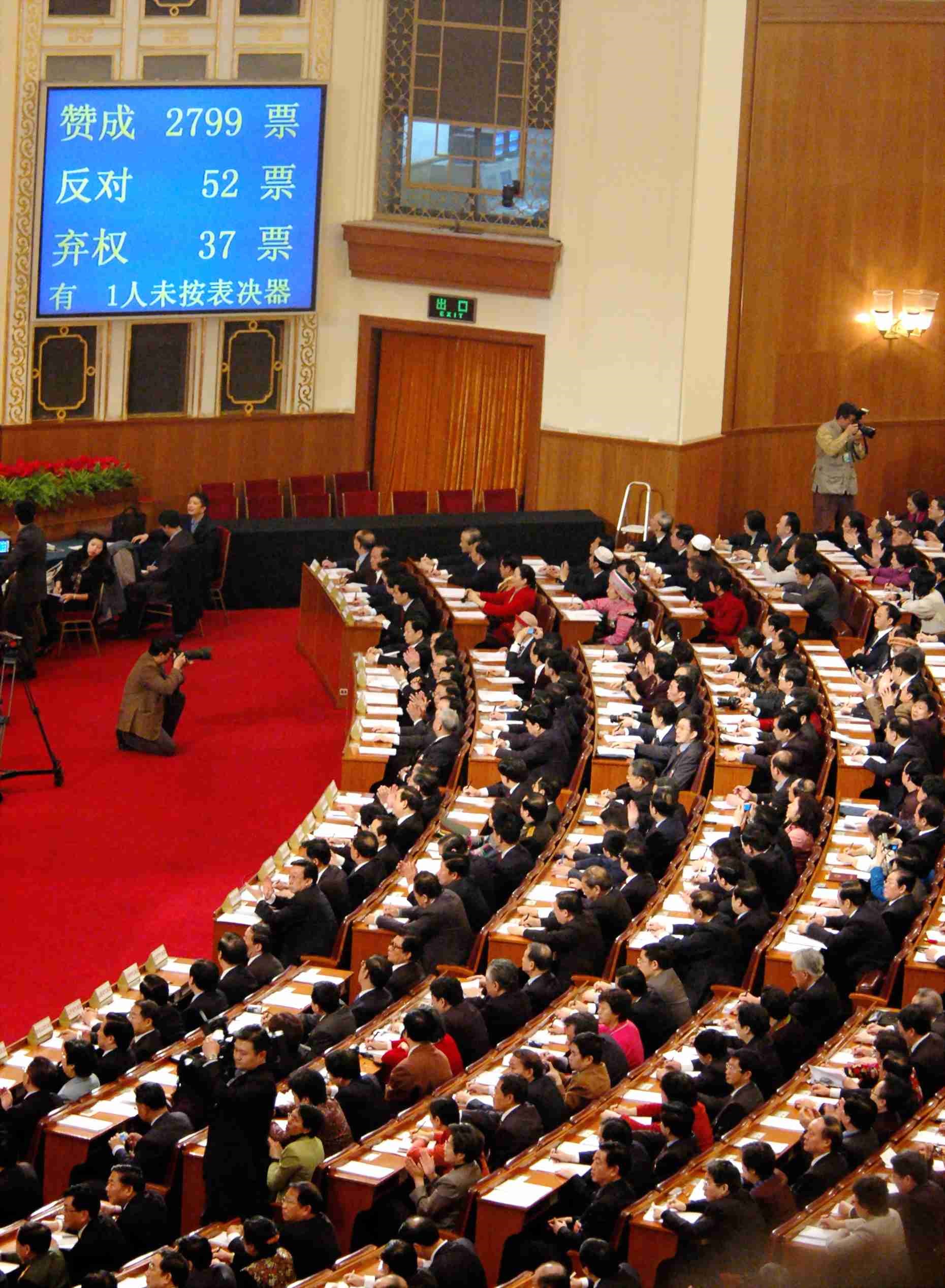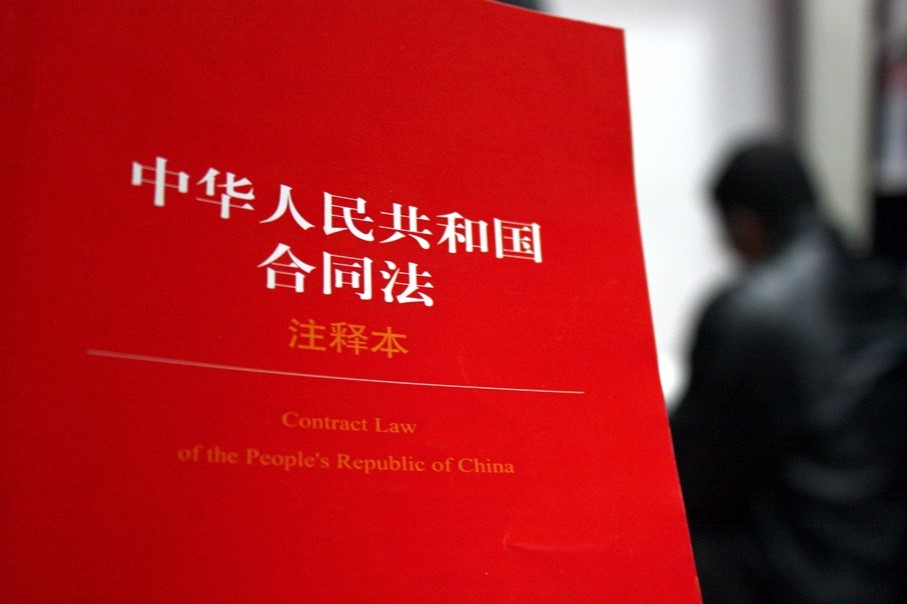

“To make a civil code of China’s own is a dream of generations of Chinese civil jurists,” said Wang Liming, chairman of the Civil Law Division under the China Law Society.

The property law is approved at the 5th Session of the 10th National People’s Congress, which concludes in the Great Hall of the People, Beijing on March 16, 2007. Photo by Wang Hui, People’s Daily Online
Now, the dream is coming true as the upcoming 3rd Session of the 13th National People’s Congress (NPC) is about to approve the draft of the Chinese civil code.
The civil code is a milestone in China’s legislative history. It is the first law named with “code” since the founding of the People’s Republic of China in 1949, as well as a basic civil legal norm, Wang introduced.

Delegates of the Municipal and District People’s Congress in Hefei, east China’s Anhui province explain the draft general rules of the civil code to residents, March 9, 2017. Photo by Zhang Hongjin, People’s Daily Online
It is divided into seven sections, namely the general rules, as well as provisions on property, contract, personality rights, marriage and family, inheritance, and torts. Established on Chinese practices and learning from the foreign legislative experiences, the civil code demonstrates the development level of China’s civil legislation.
According to Wang, China’s legislative departments have initiated the making of civil code for times, but had to adopt a “retail after wholesale” strategy restricted by the then social and economic development, which means the country planned to firstly make individual laws on property, contract and torts, etc., and then compile a civil code based on those.
However, the compilation of the civil code is not simply “adding up” the laws, but integrating the existing individual civil laws in a science-based and logical manner with intrinsic consistency, and filling legislative gaps in certain areas.
“The civil code will make individual laws more comprehensive, systematic and coordinated, which helps better balance the problems in different individual laws,” Wang said. It will also provide comprehensive, authoritative and systematic arbitration rules for jurisdiction departments, as well as guide and normalize different civil conducts for the public, he added.

A citizen reads the Contract Law of the People’s Republic of China at a Xinhua Bookstroe in Wanzhou district, Chongqing municipality, March 5, 2010. Photo by Chen Jianhua, People’s Daily Online
The section on personality rights is a major high light of the Chinese civil code, Wang noted, explaining the section answers to the need for personality rights protection in the era of internet and big data and responds to the challenges for personality rights protection. It has Chinese characteristic and showcases Chinese wisdom, Wang said.
The draft section on personality rights established a system of injunction which enables the courts to issue injunctions against the practices infringing upon personality rights, said Wang, adding that it helps offer timely assistance for victims.
Wang told People’s Daily that legislative departments have done a huge amount of work, and the jurisprudential circle and legal profession have both made constructive contributions since the 4th Plenary Session of the 18th Central Committee of the Communist Party of China (CPC) decided to compile the civil code.
Each draft section of the civil code has been deliberated and revised by the NPC Standing Committee, and now the draft civil code is generally in good shape. Wang said he hopes the code will be implemented soon, so as to offer strong support for comprehensively promoting law-based governance.

 Award-winning photos show poverty reduction achievements in NE China's Jilin province
Award-winning photos show poverty reduction achievements in NE China's Jilin province People dance to greet advent of New Year in Ameiqituo Town, Guizhou
People dance to greet advent of New Year in Ameiqituo Town, Guizhou Fire brigade in Shanghai holds group wedding
Fire brigade in Shanghai holds group wedding Tourists enjoy ice sculptures in Datan Town, north China
Tourists enjoy ice sculptures in Datan Town, north China Sunset scenery of Dayan Pagoda in Xi'an
Sunset scenery of Dayan Pagoda in Xi'an Tourists have fun at scenic spot in Nanlong Town, NW China
Tourists have fun at scenic spot in Nanlong Town, NW China Harbin attracts tourists by making best use of ice in winter
Harbin attracts tourists by making best use of ice in winter In pics: FIS Alpine Ski Women's World Cup Slalom
In pics: FIS Alpine Ski Women's World Cup Slalom Black-necked cranes rest at reservoir in Lhunzhub County, Lhasa
Black-necked cranes rest at reservoir in Lhunzhub County, Lhasa China's FAST telescope will be available to foreign scientists in April
China's FAST telescope will be available to foreign scientists in April